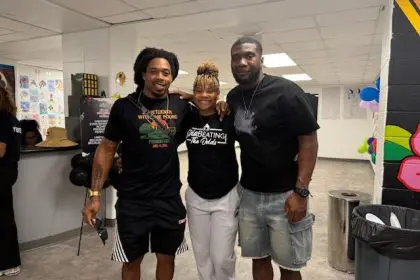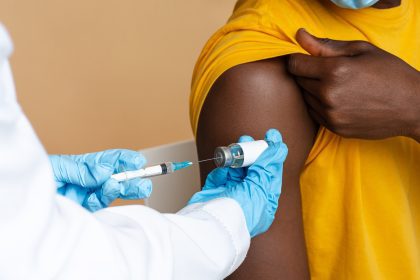As Minority Health Month draws to a close, the significant health disparities affecting Black communities remain in sharp focus. Through committed advocacy and personal example, hip hop icon LL Cool J and jewelry designer Simone I. Smith have established themselves as influential champions for health awareness. Their two-decade journey from personal health crisis to nationwide advocacy offers powerful lessons about turning life challenges into community empowerment.
A 20-year cancer survival journey transforms into mission
Two decades ago, a cancer diagnosis changed everything for the Smith family. That pivotal moment began a personal health journey that eventually expanded into a far-reaching advocacy movement. Simone’s experience with cancer treatment and recovery highlighted the critical importance of early detection – a message she now shares prominently in all health discussions.
The most impactful aspect of Simone’s advocacy stems from her pre-diagnosis health habits. Long before cancer entered her life, she maintained consistent medical check-ups and body awareness. This proactive approach likely contributed significantly to early discovery of her condition when treatment options proved most effective. Her experience demonstrates how established health routines create protective foundations that prove invaluable during unexpected health challenges.
Cancer survivorship transformed from personal victory into public mission as the years progressed. Rather than keeping her health journey private, Simone deliberately chose to share her experiences to benefit others. This openness about personal health matters helps reduce stigma around cancer discussions in communities where such topics often remain private.
The Smith family approach to health communication extends well beyond public advocacy to shape their home environment. Health discussions became normalized within their household, creating an atmosphere where fitness, nutrition, and preventative care received regular attention. This family-centered approach ensured their children grew up understanding the value of proactive health management from an early age.
Four decades of fitness shapes family wellness culture
Few contemporary entertainment figures can claim a longer commitment to physical fitness than LL Cool J. His 40-year dedication to regular exercise began well before fitness became fashionable in hip hop culture. This consistency demonstrates a genuine commitment beyond image consideration, establishing credibility when discussing long-term health habits.
The motivation behind this lifelong fitness journey reveals important insights about accessible wellness. Observations of peer transformation through exercise provided early inspiration, showing how physical fitness created pathways to better futures. This origin story makes health improvement seem achievable for others from similar backgrounds, removing the perception that wellness requires exceptional resources or advantages.
The impact of visible fitness commitment extends naturally to the next generation. Children raised watching consistent parental exercise develop their own physical activity habits almost organically. The Smith children observed fitness as a non-negotiable part of daily life, integrating similar values into their own routines. This generational influence creates sustainable health practices that protect against conditions disproportionately affecting Black communities.
Beyond physical benefits, fitness serves as tangible evidence of personal agency in health outcomes. The principle that individuals can significantly impact their health destiny through consistent choices runs counter to fatalistic health attitudes sometimes present in underserved communities. This empowerment message may prove as valuable as specific exercise recommendations.
Strategic partnership amplifies early detection messaging
The collaboration between the Smiths and pharmaceutical company Pfizer demonstrates how personal experience can align effectively with corporate health initiatives. Their partnership promotes an online assessment tool designed to help individuals understand personal cancer risk factors. This technological approach to risk evaluation makes complicated medical information more accessible to diverse communities.
The partnership’s focus on the American Cancer Society’s Cancer 360 assessment tool addresses a critical information gap in cancer prevention. Many individuals remain unaware of their specific risk factors or appropriate screening timelines. Digital tools provide personalized guidance that might otherwise require multiple medical consultations, removing barriers to essential health information.
This advocacy work extends beyond traditional celebrity endorsement into integrated business practices. Simone’s successful jewelry line incorporates philanthropy directly into its business model, with a portion of proceeds supporting cancer research. This approach creates sustainable funding rather than one-time charitable events, providing consistent resources for essential research initiatives.
The alignment between personal experience and advocacy focus creates authentic messaging likely to resonate with target audiences. Having navigated cancer treatment firsthand, the Smiths speak to prevention with credibility impossible to manufacture. This authenticity helps overcome skepticism sometimes directed toward celebrity-backed health initiatives.
Early detection message addresses crucial health gap
The consistent emphasis on early cancer detection addresses a significant disparity in health outcomes. Black Americans face higher cancer mortality rates despite lower incidence for many cancer types, partially attributable to later-stage diagnoses. This targeted messaging directly addresses a literal life-or-death issue within the community.
Personal testimony about early detection carries particular weight coming from a long-term survivor. Simone’s two-decade survivorship provides living proof of early intervention benefits, moving the concept from abstract medical advice to concrete reality. This evidence-based approach offers hope while emphasizing practical action steps.
The early detection message extends beyond cancer to promote comprehensive preventative healthcare. Regular check-ups, baseline testing, and body awareness apply to numerous health conditions affecting minority communities disproportionately. This broader application increases the advocacy’s potential impact beyond a single disease focus.
Educational efforts specifically address screening hesitancy stemming from historical medical distrust in Black communities. By acknowledging these concerns while emphasizing the life-saving potential of early detection, this approach balances validation of community experiences with crucial health guidance. This nuanced messaging demonstrates sensitivity to complex factors influencing health decisions.
Hip hop platform extends health message reach
Four decades of cultural influence provides exceptional reach for health advocacy messages. Few figures maintain cultural relevance across such an extended timespan, positioning LL Cool J uniquely to bridge generational gaps in health communication. His evolution from teenage rap phenomenon to respected entertainment veteran creates credibility across multiple demographic groups.
The integration of health advocacy with hip hop legacy preservation demonstrates how wellness messaging can complement cultural celebration. Through his Rock the Bells platform, health discussions occur naturally alongside music appreciation, reaching audiences who might avoid explicit health content. This approach introduces wellness concepts within culturally relevant contexts.
Long-term vision characterizes both music legacy work and health advocacy efforts. The focus on creating multigenerational impact rather than short-term recognition demonstrates unusual perspective in entertainment circles. This commitment to building lasting change aligns perfectly with preventative health messaging that similarly requires long-term vision.
Music itself plays a significant role in holistic wellness approaches. The acknowledgment of music’s emotional and spiritual benefits complements physical health discussions, creating more comprehensive wellness models. This integration of artistic expression with physical wellbeing resonates particularly in communities where music holds deep cultural significance.
Practical health habits demonstrate accessibility
The health practices promoted through this advocacy emphasize achievable habits rather than complex regimens requiring extensive resources. Regular medical appointments, consistent exercise, basic nutritional awareness, and supplement use represent accessible actions applicable across socioeconomic circumstances. This practical approach increases likelihood of adoption.
Family-centered health strategies create supportive environments for maintaining wellness routines. By discussing health openly with children and modeling consistent habits, the Smiths demonstrate how family units can reinforce positive behaviors. This approach recognizes that sustained health practices require supportive social contexts rather than purely individual willpower.
Body awareness receives particular emphasis as a cost-free yet powerful health tool. Learning to recognize subtle changes and unusual symptoms enables earlier medical intervention without sophisticated technology or expensive testing. This empowering message encourages individuals to trust their observations and seek appropriate care promptly.
Digital resources like online risk assessment tools extend professional guidance beyond traditional medical settings. By promoting technology-based health resources, this advocacy acknowledges both the challenges of healthcare access and the opportunities presented by widespread smartphone adoption. This approach meets people where they are technologically while encouraging appropriate medical follow-up.
The Smith family’s health advocacy demonstrates how influential figures can leverage personal experience, cultural platform, and strategic partnerships to address critical health disparities. Their emphasis on early detection, consistent fitness, family health communication, and practical prevention strategies offers accessible guidance rather than intimidating ideals. Most importantly, their two-decade commitment to this cause demonstrates the sustained effort required to create meaningful change in community health outcomes.















